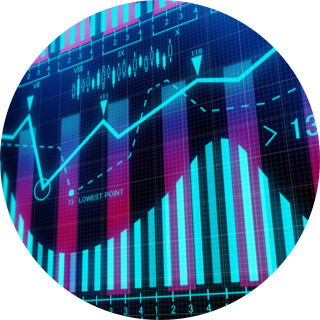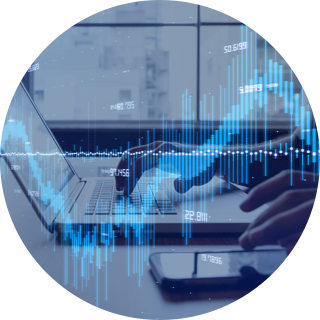An ETF or
There is a range of reasons or rationales as to why people take out ETF’s, from diversification of their portfolios, through to passive management and the low cost of management. Depending on an investors individual and personal investment goals and strategies, their reasons may vary.
[1] https://www.moneysmart.gov.au/investing/managed-funds/exchange-traded-funds-etfs
When investors wish to redeem their mutual fund shares, they are returned to the mutual fund company in exchange for cash. Creating an ETF, however, does not involve cash[1].
As outlined by CommSec, ETFs trade at a unit price close to the net asset value of the underlying portfolio and each ETF has a unique ASX code, just like ordinary shares.
As ETFs have an open-ended structure, you can enter and exit an ETF as you choose (subject to liquidity).

Examples of ETFs are Vanguard Australian Shares Index (VAS) which is comprised of Australia’s 300 largest companies, seeking to provide a fund that mirrors the performance of the S&P/ASX 300. Another is the BetaShares U.S dollar ETF, which tracks the USD relative to the AUD.
Another example is FUEL or the BetaShares Global Energy Companies ETF.
As can be seen, ETFs vary in terms of the type of market, asset class or currency that they follow, but in real terms, they are created to track the performance providing hedging opportunities for investors.
[1] https://www.investopedia.com/articles/mutualfund/05/062705.asp
[2]https://www.commsec.com.au/products/exchange-traded-funds.html
Diversification is the key reason people invest in Exchange Traded Funds
ETFs allow investment in a range of companies that wouldn’t be viable for an individual investor to achieve on their own, however, through the fund and the economies of scale it brings.
For example, the Vanguard Australian Shares Index ETF (VAS), has performed since its inception at a rate of 9.28%, outperforming its benchmark of 9.45% as it seeks to track the return of the S&P/ASX 300[1]. While many individual stocks may have experienced industry, market or company specific volatility, the fund has continued to perform.
The second reason people invest in
Thirdly,
When it comes to the owning Exchange Traded Funds, the costs are low. As the performance is tracking with the market, you are not paying a broker or manager to actively manage your portfolio, thus reducing your costs.

Finally, the transparency & accountability of the Exchange Traded Funds is such that they are required for the most part to publish a list of their holdings on a daily basis. As an investor to the fund – or a potential investor – you can review their weighting in the fund on particular assets so you can ensure that your investment objectives are being aligned with by investing in the particular fund.[2] Should you see a deviation of any type to your strategy or objectives, then you can simply sell out at the market price.
[1] https://www.vanguardinvestments.com.au/retail/ret/investments/product.html#/fundDetail/etf/portId=8205/?overview
[2] https://www.getsmarteraboutmoney.ca/invest/investment-products/etfs/5-reasons-why-people-buy-etfs/
With a total fund size of $14,093.2 million in 300 holdings[1], the fund is heavily weighted in some of Australia’s most well-known ASX listed companies including Commonwealth Bank, BHP, Westpac, CSL and ANZ Bank.
The sector allocation, as with the ASX300, is geared at 31.8% financials, 18.6% materials, 8.5% health care and 8.1% industrials as the top 5 largest segments, which stands to reason considering the state of the Australian economy.
In terms of allocation of the holding details by percentage and by company, all of the top ten companies span from 8.2% (CBA) down to 2.19% (Telstra), with anything outside the top ten (which in the case of the VAS fund lands at the Transurban Group) is invested at a rate lower
This is representative of the Australian economy as a whole and ensures that as the nature of the fund is to track the performance of the ASX, the weighting in the fund should reflect that.
[1] https://api.vanguard.com/rs/gre/gls/1.3.0/documents/7639/au viewed on 28/2/2019
In Australia, the ‘passive investment market’ has grown to $40 billion and $4 trillion globally[1], however, many investors are concerned about how investments will fare when faced with an economic downturn, recession or even worse, another GFC.
But the fact is, that “investors who engage in mindless ETF strategies, believing diversification will save them, could face horrendous losses if markets tumble”[2].
The Exchange Traded Funds market is set to expand, with only 10% of the turnover in the ASX being that of
While market risk is by far the largest concern as investors take a ‘passive mindset’ and Exchange Traded Funds providers start trying to
As the number of investors looking to get into Exchange Traded Funds in Australia is set to expand, so are the number of funds that are set up. Although under the heavily regulated market of the ASX, there are still inherent risks of unscrupulous operators or funds that are operating in risky and underperforming sectors, not to mention the spread of performance by industry operators within the same sectors could weigh heavily on ETF investments.

Like cryptocurrency in 2017, Exchange Traded Funds are the ‘hot thing’ in financial markets – truth be told, many ‘traditional investors’ stayed well clear of Cryptocurrency trading during that time and Exchange Traded Funds have an inherent risk of a similar occurrence.
As investors flock to take advantage of the ‘new ETF vehicles’ they may find they have limits on their liquidity and if the money rushes out, the valuations could be harmed for existing investors.[4]
[1] https://www.afr.com/personal-finance/explosive-growth-of-etfs-a-boom-for-investors-but-there-are-risks-20180815-h1402z
[2] https://www.afr.com/personal-finance/explosive-growth-of-etfs-a-boom-for-investors-but-there-are-risks-20180815-h1402z
[3] https://www.afr.com/leadership/afr-lists/rich-list/how-the-rich-invest-graham-tuckwell-punts-payday-on-love-for-etfs-20190306-h1c277
[4] https://www.etf.com/etf-education-center/21004-what-risks-are-there-in-etfs.html
Like any investment, should the fund begin to deviate from your investment strategy, you should review the appropriateness of the option for your portfolio, rather than staying in because “that is the way the market is going”.
As a long-term strategy, Exchange Traded Funds provide an opportunity for a certain percentage of your investment portfolio to effectively track with the chosen market, exchange, currency or commodity market that suits your investment needs, as provides a passive investment option.
For many investors, this provides security in the knowledge that even if their short-term strategy fails, their Exchange Traded Funds will be there to back them up.
However, in the event of a market crash, recession or even a global financial crisis, not even Exchange Traded Funds are immune – and investments although passive, must always be informed and proactive when it comes to their investment portfolios.
The ability to take advantage of industry growth, new technology or innovative ideas through ETFs can see impressive profits for any portfolio.
It must always be viewed in context with the increased risk though, and in this sense, ETFs does require a level of understanding and its performance.
With so many ETFs to choose from, finding the right investment can also be time-consuming, and this is why for ETF investments, the managed approach has much to offer.
1. Schedule an appointment (Conference Call) with an Investment Manager
2. Submit a Managed Discretionary Account (MDA) application with Walker Capital Australia.
3. Open a trading account with the Walker Capital Australia’s executing broker.
4. Select from our range of investment strategies and choose your asset allocation between the choices of accounts.
5. Once all accounts are opened, and funds have been chosen, our team gets to work and begins trading.
Walker Capital Disclaimer *
Walker Capital Private Wealth Pty Limited (ABN 86 161 363 097) holds an Australian Financial Services Licence (AFSL No. 436859). You should read and consider the relevant Disclosure Document and the issuer's Terms and Conditions before making a decision about whether to purchase any financial products.
Walker Consulting (Australia) Proprietary Limited t/as Walker Capital Australia (ACN: 602952116) is a Corporate Authorised Representative (CAR No. 1250196) of Walker Capital Private Wealth Pty Limited (ACN 161 363 097) (AFSL no. 436859)
© Copyright 2022 Walker Capital – All Right Reserved